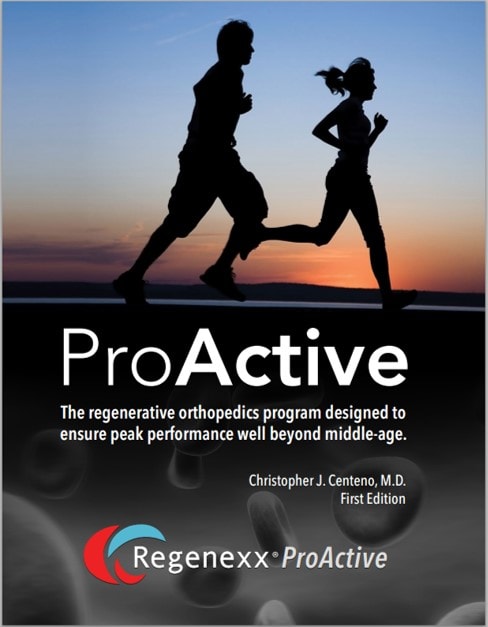One NSAID More Dangerous than All the Others?
I see countless patients who by middle age or older become what I call an NSAID addict. While these patients often believe they’re smartly using the stuff around them to keep active as they age, little do they know that using these drugs denotes a ticking time bomb of health risks. Now, a new study adds a bit more fuel to the idea that these are dangerous drugs.
NSAID Addicts
I see these patients in the office every day. Their addiction usually begins at the recommendations of a doctor, maybe their family physician or an orthopedic surgeon. They have middle-aged aches and pains that prevent them from doing what they want to do. Instead of going to a physician who will look at what’s wrong, diagnose, and treat these issues with precise regenerative medicine injections, they begin popping NSAID drugs, like Motrin or its prescription cousins. They get to a point that they have to pop a pill just to work out or be active. Little do they know that they are addicted to some of the most dangerous drugs we have.
What Is Diclofenac?
Diclofenac is a nonsteroidal anti-inflammatory drug (NSAID). In the U.S., diclofenac is only available by prescription (brands include Cambia, Voltaren, Zipsor, etc.), but in some countries it can be purchased over the counter. It is commonly prescribed for pain and inflammation in conditions such as arthritis and even migraines.
While we know all NSAIDs are dangerous, it seems diclofenac may be more dangerous than all the others.
Diclofenac a Serious Cardiovascular and GI Risk
The purpose of the new study (a cohort combining 252 studies) was to study any cardiovascular adverse events in low-risk subjects after taking the NSAID diclofenac and then compare these to adverse events in those taking other NSAIDs (ibuprofen and naproxen), acetaminophen, or nothing. The results? Compared to those who took nothing, there was a 50% increase in adverse events in those taking diclofenac. Compared to those taking acetaminophen or ibuprofen, the adverse events increase for diclofenac was 20%, and compared to naproxen, it was 30%. So what exactly were these cardiovascular adverse events? Findings included atrial fibrillation or flutter, ischemic strokes, heart failure, heart attacks, and even death due to a cardiac event.
Another disturbing finding was that diclofenac also was found to increase the risk of a gastrointestinal (GI) bleed—a dangerous side effect that has already been well established with NSAIDS and is required, along with the cardiovascular risks, by the FDA to be on the warning label; however, the GI bleed risk is significantly higher (two and a half times higher in fact) with diclofenac when compared to the NSAID ibuprofen.
A Review of More Reasons to Stay Away from NSAIDs
As if the risk of death from a heart attack or GI bleed isn’t troubling enough, there are many, many more reasons to stay away from NSAIDs. Whether it’s a prescription NSAID, such as Voltaren (diclofenac) or Celebrex (celecoxib) or even a seemingly more innocuous over-the-counter NSAID (don’t be fooled just because you can buy Advil [ibuprofen] right off the shelf—these are very dangerous drugs), the side effects apply. Let’s take a look at some of these:
- This isn’t the first study to reveal the particular risks with diclofenac in comparison to other NSAIDs. Take a look at this one I covered way back in 2011, showing heart attack risks significantly higher with diclofenac (398% risk of death from heart attack) when compared to celecoxib (207%), ibuprofen (239%), and other NSAIDs.
- Ibuprofen has been linked to infertility in males.
- Arthritis damage may worsen following the use of NSAIDs.
- NSAIDs may damage stem cells, causing them to produce defective cartilage. This link also provides another study on diclofenac (Voltaren), which shows that instead of turning into normal tendon cells, the drug causes stem cells to turn into pieces of fatty tissue.
- Even just as little as one week of NSAID use can increase heart attack risk by as much as 50%.
Additionally, NSAIDs even in normal dosages can be risky, but many consumers exceed these minimum NSAID dosages without even knowing it. How? Either by taking too much (the label directs one pill, but the consumer takes two) or by taking two drugs for two separate conditions and not realizing both are actually NSAIDs. This unintentional overdosing significantly increases the risk of dangerous side effects and can even cause an accidental poisoning, so if you’re going to take the risk with NSAIDs, make sure you are well aware of the maximum dosages.
What Can You Do?
Read my book Proactive! It contains everything you need to know to avoid being an NSAID addict! Click on the book cover below to learn these secrets:
The upshot? Don’t become and NSAID addict! Take care of your body, and don’t pop pills that increase your chances of kicking the bucket!

If you have questions or comments about this blog post, please email us at [email protected]
NOTE: This blog post provides general information to help the reader better understand regenerative medicine, musculoskeletal health, and related subjects. All content provided in this blog, website, or any linked materials, including text, graphics, images, patient profiles, outcomes, and information, are not intended and should not be considered or used as a substitute for medical advice, diagnosis, or treatment. Please always consult with a professional and certified healthcare provider to discuss if a treatment is right for you.
